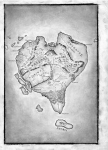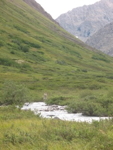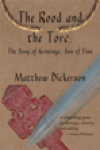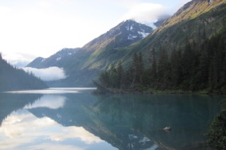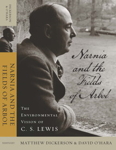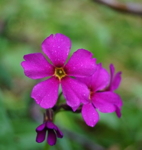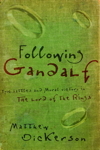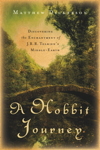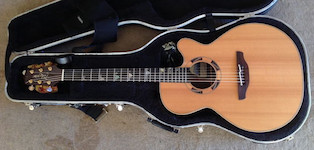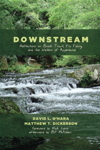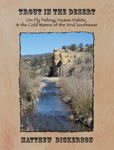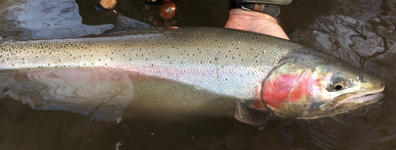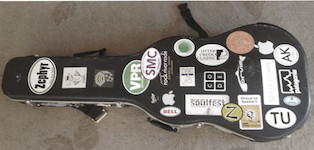RESOURCES:
Other Websites from Matthew Dickerson
For (more frequently updated) photos, articles, reflections, and essays, etc., on trout, fly fishing, and rivers, see my website:
TroutDownstream.net
with co-author David O'Hara.
And visit my YouTube channel:
Trout Downstream and Hearstreams"
especially the playlist on:
Wyoming's Wild and Native Cutthroat Trout
Links to Articles
I have written articles, stories, and essays...
for arts magazines, fishing magazines, literary journals, newspapers, journals of ecopoetics, and online magazines including: Written River, Fly Fish America, Eastern Fly Fishing, Middlebury Magazine, The Drake, and more ...
on a variety of topics related to rivers, trout, fly fishing, ecology, nature, wilderness, conservation, and the outdoors. Often on several of these at once. My style tends toward the personal narrative side of creative non-fiction.
A few of my avaiable articles on trout, fly fishing, nature and ecology, the outdoors (available free and online):
- "The Clearcut, the Cutthroat, and the Cascade Effect" in Written River (2015)
- "Return to the South Fork of the Eagle River" in Written River (2016)
- "A Lot Of Work For One Trout"in The Addison Independent (Oct. 27, 2016)
- "On Fishing, Walking, Reading and Writing"in The Addison Independent (Oct. 13, 2016)
- "A Lot Of Work For One Trout"in The Addison Independent (Oct. 27, 2016)
- "Wild Wyoming Cutthroat Trout" in The Addison Independent (July 21, 2016)
IF YOU WANT TO BUY MY BOOKS...
...by all means, please do! Thank you.
Although my books are available through the big on-line box stores, please consider ordering them directly from the publishers or through an independent bookstore, or buying them at your favorite local bookstore. Here are some links to publishers sites for Downstream and The Voices of Rivers:
- Downstream: Reflections on Brook Trout, Fly Fishing, and the Waters of Appalachia Wipf and Stock (2014)
- Homebound Publications
- Downstream: Reflections on Brook Trout, Fly Fishing, and the Waters of Appalachia
- Trout in the Desert: On Fly Fishing, Human Habits, and the Cold Waters of the Arid Southwest
- A Tale of Three Rivers: on Wooly Buggers, Bowling Balls, Cigarette Butts, adn the Future of Appalachian Brook Trout
- The Voices of Rivers: Reflections on Places Wild and Almost Wild
NEWS
For more on Matthew Dickerson's outdoor and nature writing, or for news and updates and various relections, follow him
on
Facebook:
![]()
Twitter
![]()
His Outdoors and Fly Fishing Instagram Page
![]() .
.
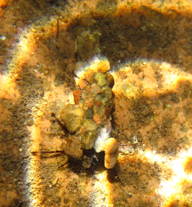
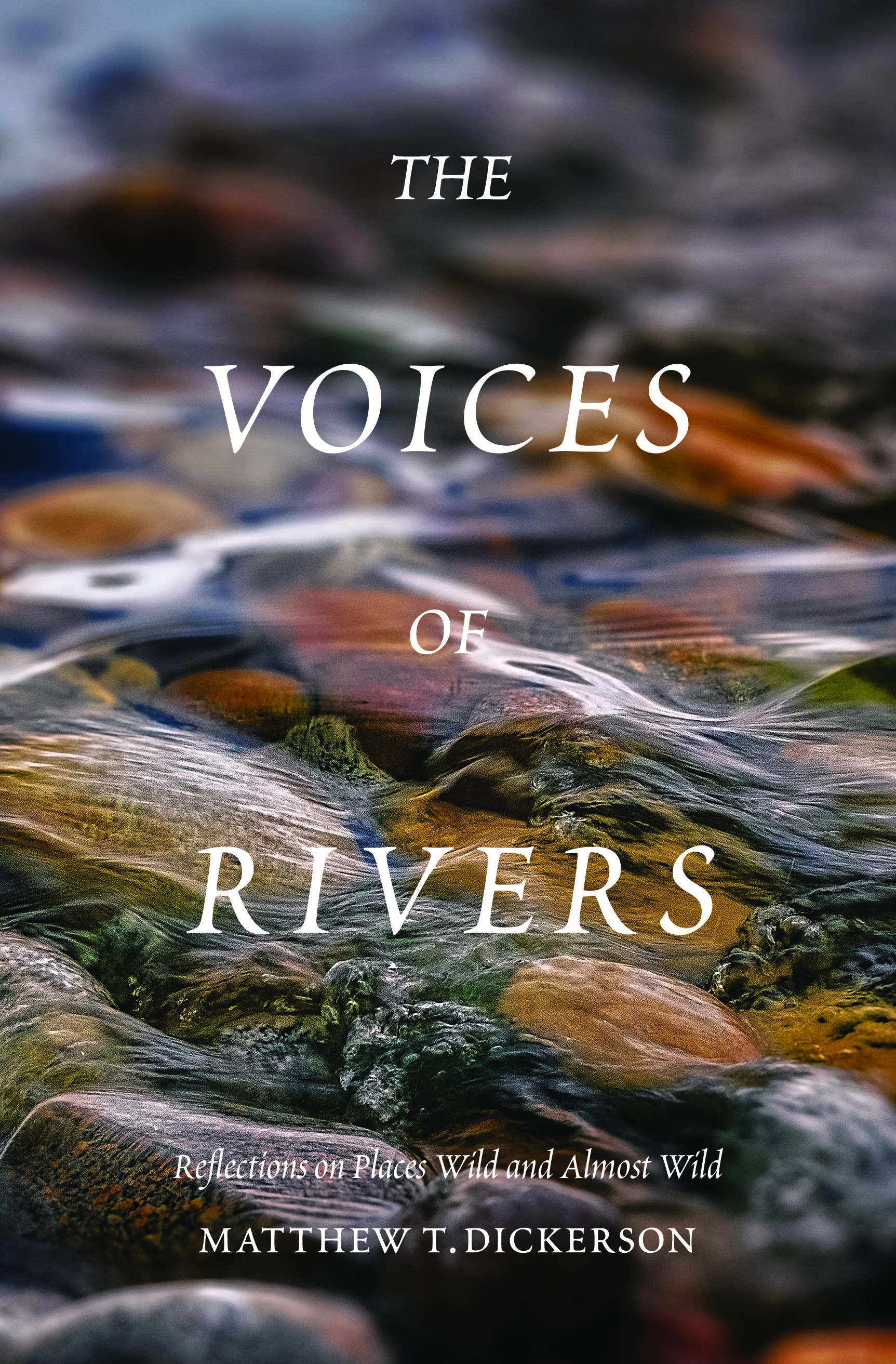
I am excited for release of two new works of narrative non-fiction between late summer of 2018 and spring of 2019.
The Voices of Rivers: Reflections on Places Wild and Almost Wild became available in April of 2019, from Homebound Publications . This collection of essays was set in Alaska, Montana, and Maine. Much of writing was based on my time as Artist-in-Residence at Glacier National Park (Montana) in June of 2017 and Artists-in-Residence at Acadia National Park in (Maine) in May of 2018, as well as time spent in National Parks, National Forests, and State Parks of Alaska, especially some amazing time over three trips to The Farm Lodge in Lake Clark National Park with visits down to Katmai National Park and Preserve. Scan down for some early response to this new book with praise coming from nature writers, fly fishing writers, environmentalists, and poets alike.
Over the Summer of 2018, A Tale of Three Rivers: of Wooly Buggers, Bowling Balls, Cigarette Butts, and the Future of Appalachian Brook Trout was published by Wings Press . This is the second volume in the Heart Streams series that began with Trout in the Desert. A Tale of Three Rivers is a small collection of essays set in the Appalachian Mountains of North Carolina, Vermont, and Maine. I wrote it at the Cabin at Shotpouch Creek while a Writer-in-Residence on the Spring Creek Project.
As the title suggests, the book shares the story of three different rivers going in different directions--or, rather, of one little tile in the mosaic that is the story of each of these rivers. The book speaks of warning and loss as well as of hope: of streams full of old appliances and a trout eating cigarette butts, as well as the return of osprey, eagles, loons, and trout to a river once listed among the filthiest in the United States. See below for an excerpt.
Excerpt from A Tale of Three Rivers
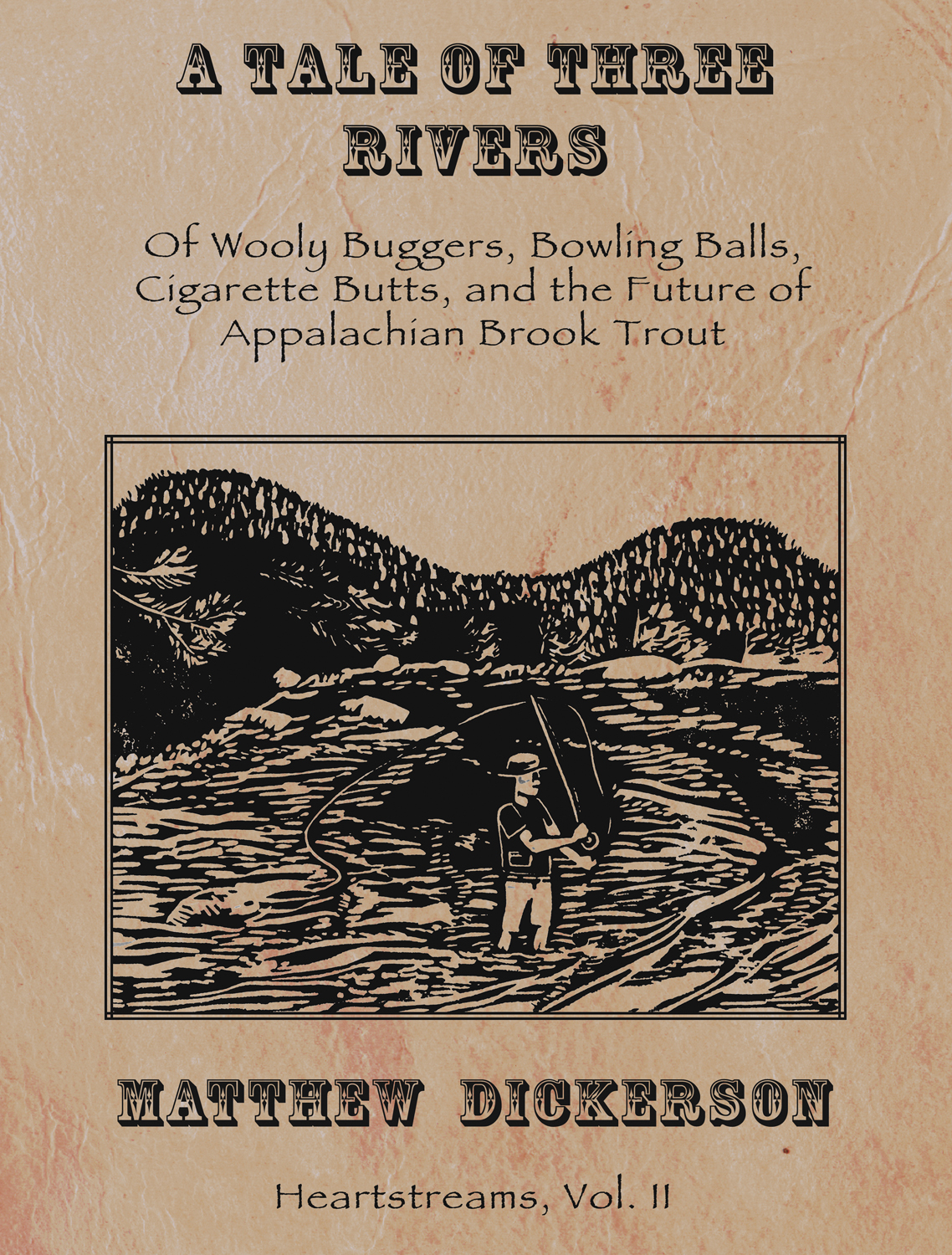
I stood with my 5-wt 9’ fly rod in hand, looking down the steep bank toward the stream that flowed beneath me. Despite the excitement I had felt on the drive here, I was not especially eager to descend the bank. I took my time pondering what fly to tie on. Some below-the-surface search pattern, perhaps? Probably a black bead-head wooly bugger or cone-head wooly bugger, my favorite search pattern in rivers that might hold big fish. But I might have also been considering a smaller brown wooly worm with some sort of pheasant tail or hare’s ear nymph tied below it as a second fly, a “dropper”. I was somewhat ambivalent. The river looked lifeless, and that was how I felt.
It was not the mud, nor the grey February skies, nor the barren oaks and sycamores that gave this morning its bleak lifelessness—that made the river appear dead and unappealing. Even the old rusting appliances and abandoned autos lining the streamside, the dishwashers, clothes washers, and Toyota Capris, unsightly though they were, did not utterly destroy the delight I usually have when approaching a river where I hope to find trout. It was the new raw trash strewn along the bank, and floating down the current that did me in: Styrofoam cups and plates and fast food restaurant refuse, plastic garbage bags, plastic cartons, and the castoffs of pre-packaged modernity. The streambed was a moving landfill, a shouted obscenity.
Sugaring season was barely starting up north. I had been cross-country skiing a few days earlier. But winter ends much earlier in North Carolina than in my home in Vermont. Even in the higher reaches of the Smoky Mountains in the western part of North Carolina, the snow had melted and spring did not look far away. My brother informed me that the river levels had come down considerably from the week earlier when the snow had been melting. The spring spawning run of rainbow trout out of the nearby lake was probably over. The water was only slightly off-color, as if it had rained two days before. Or a farmer had recently spread manure or tilled his field somewhere upstream.
I have lived much of my life in and around the Appalachian mountains. I have been awed by their beauty and splendor. And I have spent time around others from a variety of different backgrounds, religions, careers, and educations who have loved its landscapes as much as I, and who have worked hard to care for them. Economic status, at least in my experience, is not a reliable indicator of one’s attitudes toward nature. I have known those both with and without worldly wealth who have lived in harmony with others and with the world. And I have know both rich and poor who have actively exploited, or at least wantonly disregarded, the natural and human world.
Still, there is a particular brand of Appalachian poverty I have too often seen that seems to go hand in hand with an attitude of disregard and disrespect for nature. It is a culture that engenders this disrespect. This was not the first river I’d been to that had been turned into a landfill by the lazy disposal of old appliances and automobiles that paid no heed to either the beauty or the health of the land being “filled”.
Excerpt from Downstream
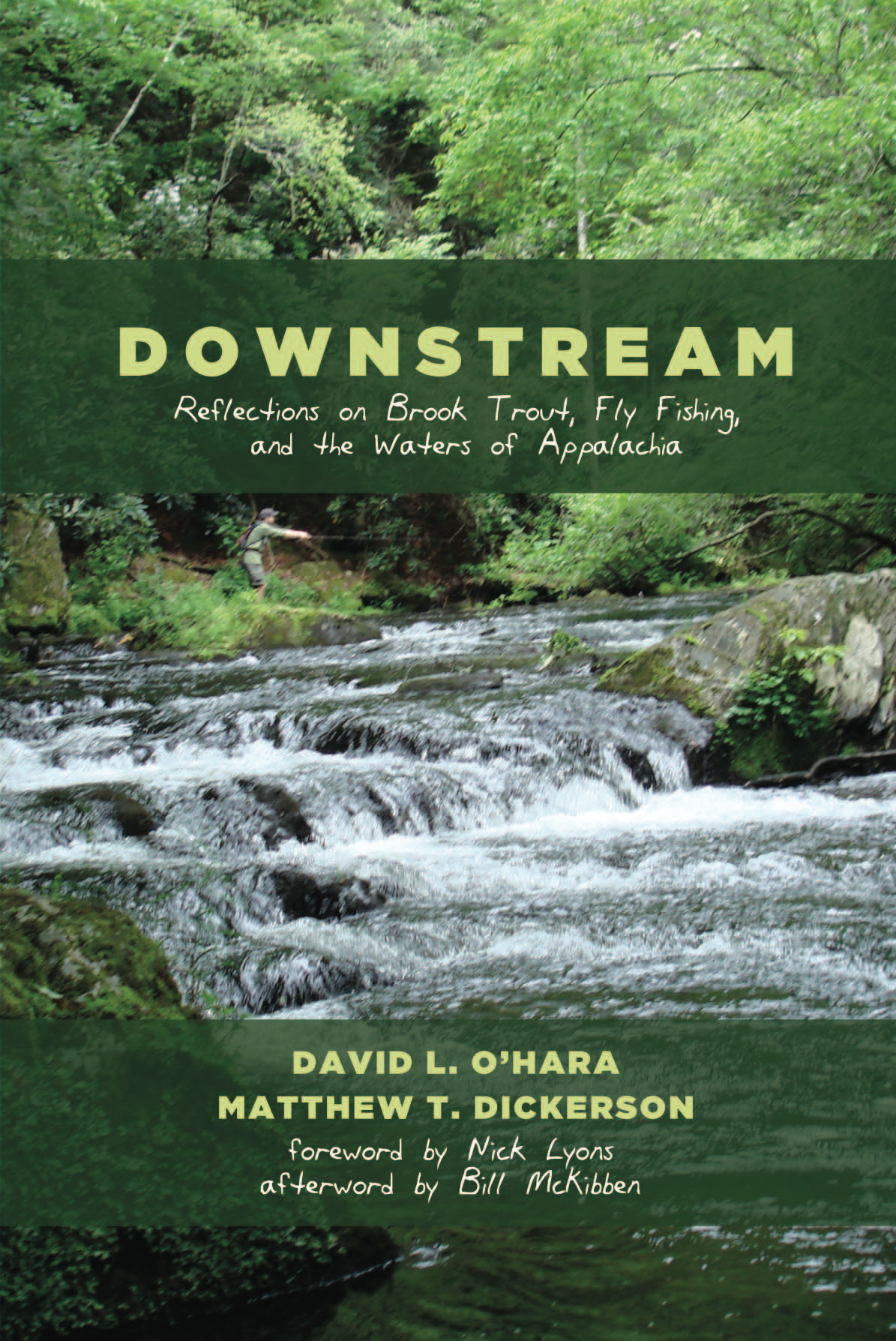
It is mid-morning on a late June day when we arrive in the tiny village of Gilead, Maine and put our canoe into the Androscoggin River. We park the car at the bridge downstream from the small delta where the Wild River flows in from the south out of Evans Notch and the shadow of Mount Washington. It is a rich and verdant valley. The shores are lined with a varied mix of hardwoods and conifers. Tall pines and spruce tower over the smaller cedars right on the water’s edge. The white of the occasional paper birch stands in sharp contrast to the deeper greens. Standing here I think of the Biblical town of Gilead in another mountainous region, one east of the Jordan River in ancient Israel. The name Gilead means “hill of witness.” This modern Gilead, also, will be a witness of something good, of life where there once was death. It will be a place of balm to heal an old and mortal wound.
Dave and I are here with Dave’s thirteen-year-old son Michael for a day of fly-fishing and canoeing along a six-mile-long float of the Androscoggin. In the past, the river has held transplanted European browns and west coast rainbows. But recently native eastern brookies have been returning—some on their own, finding their way down from clean mountain tributaries like the Wild River, and some with the help of state hatchery trucks. We are hoping to hook some brook trout, but we will be happy to catch any trout at all.
To say that the water is high, however, would be a gross understatement. Two weeks of daily thunderstorms have turned it into a dark and wild torrent. “Almost unfishable” is the expression we use to describe it. And dark clouds are threatening even more rain. We consider turning back to the camp where we are staying twenty minutes away in the village of Bryant Pond. But Dave and Michael have driven from South Dakota to spend a week with me in Maine. We don’t have the luxury of waiting a few days for the water to settle. So we go through the motions of setting up our rods and tying on flies, even though this small labor may prove futile.

Just below its confluence with the Wild River, the main current of the Androscoggin divides around a wide gravel bar. The stronger current flows down the southern shore past a pair of huge granite boulders, deposited here centuries ago by the forces that shape rivers. A few dozen yards below the boulders, the river narrows and the southern channel swirls hard around a long, deep ledge. A smaller channel, though one still too deep to wade except in mid-summer, follows the wooded northern shore. The gravel bar separating these two channels is about thirty yards wide and fifty yards long. In the summer it typically ranges from a few inches deep to something just over the knees. When the water is at mid-summer low, some of the gravel bar becomes exposed, and the currents on either side are slow and shallow enough that a steady and adventurous wader can sometimes work out to it from upstream. On the downstream side, however, it drops off into a deep hole and is accessible only by boat.
My favorite way to fish this stretch is to canoe up from below, anchor the canoe on rocks or in shallow water midstream between the swift currents, and then step out of the canoe and wade the gravel bar in the middle of the river. In this way I can cast to either side or work the deep pool below without having to deal with the clumsiness of casting from a canoe.
On this day, however, this gravel bar is under so much water it isn’t even visible. Not that it matters. We couldn’t paddle a canoe against the heart of the rain-swelled current. There is no way up there without an outboard motor. And no anchor would hold us even if we succeeded in getting there. The best we can do is paddle hard up the eddies against the north shore and take a few casts behind the boulders that stick out a dozen yards downstream of the gravel bar. Dave is in the bow of our canoe, and Michael sits in a low seat in the middle. I am in the stern. Dave and Michael tie on streamers, and I put on a large heavily weighted stonefly nymph. We make the requisite casts, letting our flies sink as deep as they can. The casts, as expected, are fruitless. We should probably remove the word “almost” from the phrase “almost unfishable”. The turbulent water is the color of tea that had been left steeping far too long. Perhaps Earl Grey, Dave’s favorite afternoon blend. How many feet of visibility in a really large cup of Earl Grey?
Excerpt from Trout in the Desert
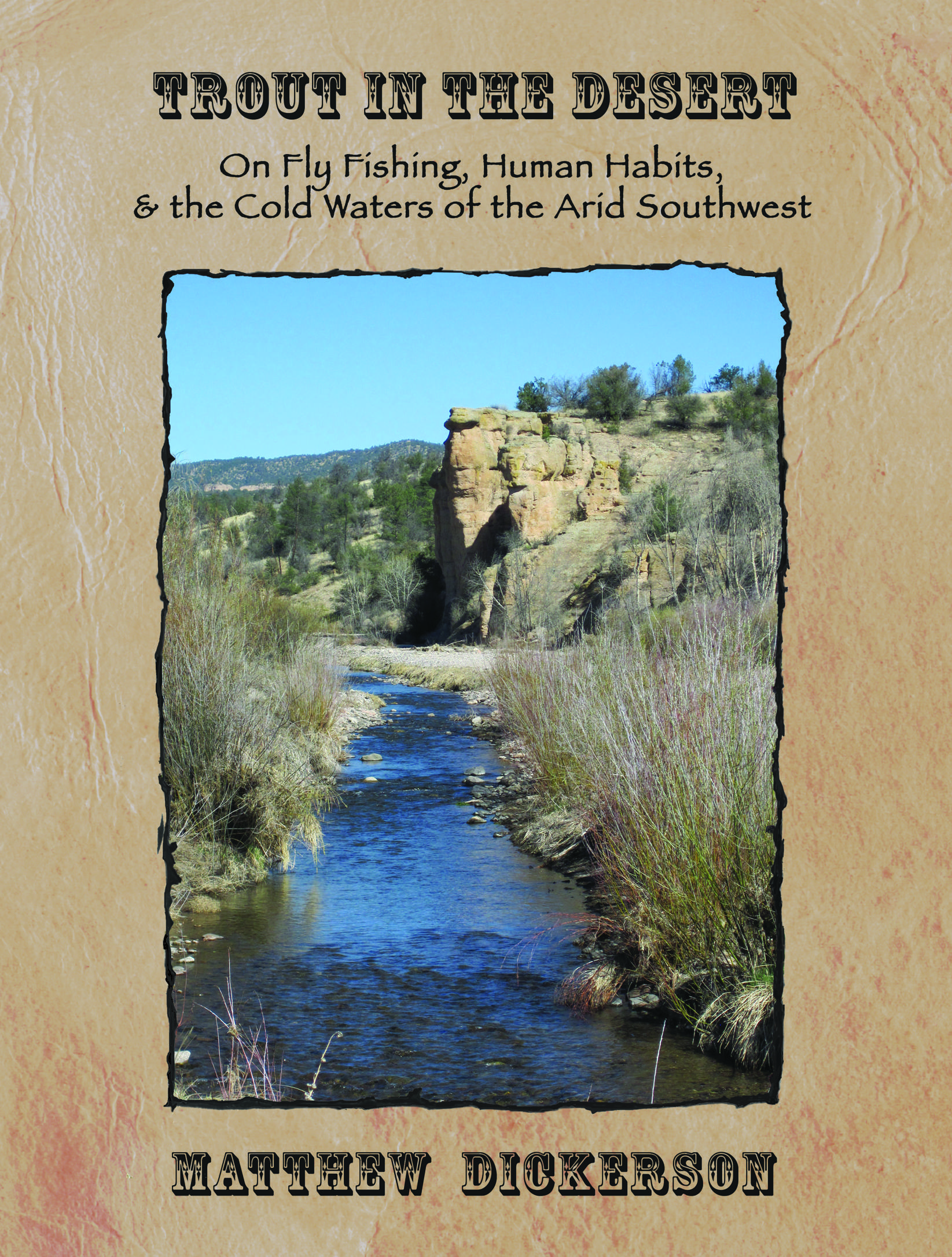
However there are native trout in the arid southwest. They live high in the mountains, often at 6000’ or 7000’ in elevation, in waters fed much of the year by snow runoff, and by cold springs exposed tens of thousands of years ago by volcanic eruptions like the ones that created the caldera from which the headwaters of the West Fork of the Gila flow. They remain shielded by a canopy of forests that grow even in the southwest at altitudes where peaks can trap passing moisture.
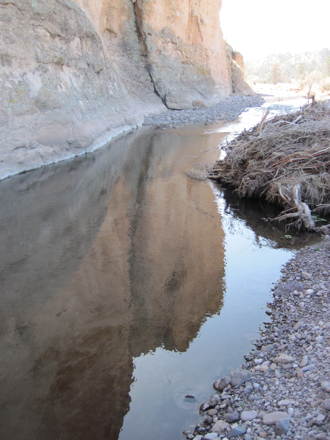
Many of these trout populations are gone, mostly because of human changes to their environment. But endangered remnants of some remain, where they and their environment have been protected. Strains of native cutthroats can still be found even in the higher elevations in tributaries of the Rio Grande near the border of Texas and New Mexico. There are even trout in the mountains further south in Mexico. Among all these desert trout, the Apache and Gila trout of western New Mexico and eastern Arizona—golden-hued relatives of the rainbow trout—hold a special place in my imagination. I had never caught or even seen one.
For the past few weeks, as I prepared for the trip, I have been reading Greg McNamee’s account of Gila: the Life and Death of an American River. It is a beautifully written tale, but also a tragic one, recounting some of the extremes of atrocities that humans are willing to commit upon one another and on the earth. It is a tale of a river that once sustained an abundance of life—including human life—over tens of thousands of square miles from the mountains of what is now New Mexico for six hundred miles westward to the Colorado River. And which now is just a dry river bed for much of its length.
Growing up in the northeast, where water is abundant, it is hard for me to imagine that a once swift and abundant river like the Gila could be so dammed and exploited that its waters no longer reach the ocean. But, of course, the Colorado River itself no longer reaches the ocean much of the year.
High up at its headwaters in the national forest that bears its name, however, the Gila still flows year round, clean and clear and cold. It has been offered some protection, thanks in part to the efforts of Aldo Leopold. Which is another reason for me to visit. I have taught courses at Middlebury College exploring the writings and ideas of Leopold, whose only life was shaped in part by his experiences along the headwaters of the Gila and by the beauty of that area. I wanted to see this land that so inspired and shaped one of our country’s most important conservationists.
Endorsements and Reviews:
About Downstream
"One of America's greatest (and most threatened) glories is its network of public lands, and in this volume the talented Matthew Dickerson makes the most of them. These landscapes are not the backdrop but the foreground of his lovely essays, that will make you want to travel to these treasures." --Bill McKibben, author of Falter: Has the Human Game Begun to Play Itself Out?.
"In The Voices of Rivers, Matthew Dickerson wraps his provocative discourse on pressing ecological concerns within a framework of wide-eyed wonder at the beauty and complexity of nature experienced through the eyes and soul of an itinerant angler. Through his captivating storytelling, Dickerson seamlessly translates his personal journeys of discovery into a single poignant cautionary tale about what those of us who value intact ecosystems stand to lose if we don’t remain both intellectually engaged and socially vigilant." --John Shewey, Editor-in-Chief of the Northwest Fly Fishing magazine group.
"In The Voices of Rivers, Matthew Dickerson obeys Chekhov’s great dictum by rendering the natural world not as a mere backdrop but rather so keenly that the bodies of moving water he traffics as an angler become well-drawn characters in their own right. In Dickerson's clean prose, they speak with the bedrock and the cobbles, with the author's beloved salmonids, and--yes--the author himself. In a world radiating with "the virtual," this book provides unmistakable contact with the actual and a rarefied depth of immersion." --Chris Dombrowski, author of Body of Water
"When reading Matthew Dickerson's The Voices of Rivers, I cannot help but think of connections. As I live through his own early-life exposure to rivers, bird sound and fish, I think of my own explorations through the Black Hills as a youth. His later-in-life journeys through the watersheds of Montana, Alaska, and Maine are made through his deep connection to certain species of trout. In doing so, he shows how he has developed a connection to the natural world around him in a way that challenges us to find our own. Not only so that we may be reunited in some way with the natural world, but to see how our behavior as a human species - our often short-sided behavior through development and efforts to "tame" nature - deeply endangers an entire chain of life that ultimately affects us. From creating imbalance to rivers and fish or altering the natural relationship between predator and prey, we have caused imbalance, lost our connections. Matthew's words help us to realize this, invite us into a world where we are aware and in balance, and give us hope. " --Carl Johnson, award-winning Alaskan photographer and author of Where Water is Gold: Life and Livelihood in Alaska's Bristol Bay
"Hiraeth bleeds through Dickerson’s book. Whether in the search for native cutthroat through the writing of Wendell Berry in Glacier National Park; or the quest for Dolly Varden in Alaska, this book is a breath of fresh air.... Like finally learning to whistle through a blade of grass, to read this book is to “stumble on a patch of never-before-noticed wildflowers on a familiar wooded path.” Read it to learn about the solace and beauty of fishing for wild trout and salmon. Read it to learn about how we can re-knit our lands and waters. Read it to better comprehend the greed and selfishness of those that would despoil landscapes such as Bristol Bay, Alaska. Read it. " --Chris Wood , President and CEO of Trout Unlimited
About Downstream
"Downstream is an immersion (almost literally) in the streams and rivers of Appalachia in the company of two university professors, friends who through the years have developed both competence and knowledge in fly fishing. From its early pages I was riveted. Their language is exuberant but also disciplined. It didn't take me long to know that it would soon take its place on my bookshelf alongside John Muir and Henry David Thoreau. They are that good." --Eugene H. Peterson, Regent College, Vancouver, BC, Canada
"[in Downstream] O'Hara and Dickerson remind us that a fly fisher must think like a trout--then they lead us on a rugged and beautiful adventure through an ever-expanding 'riparian cosmos.' Downstream radiates out from Manitou's brookie into seamlessly shifting currents of ecology, philosophy, biology, personal history, engineering, natural history, theology, and management until we don't know where the human perspective begins and the brook trout's ends. They present a universe both stunning in its magnificence and terrifying in its fragility." --Andrea Knutson, Oakland University, Rochester, MI
"[in Downstream] O'Hara and Dickerson embark on an angler's quest for the fragile but resilient Appalachian brook trout, from the brawling rivers of Maine to tiny Smoky Mountain headwaters in Tennessee. But their journey reveals much more than that, about why we seek the places that trout live--the rivers and streams that allow us to know ourselves and find our way. This book is the vessel for a philosophy that celebrates nature, place, family, and home." --Kurt D. Fausch, Colorado State University, Fort Collins, CO
"Downstream] traces and enacts the intricacies of confluence within the Appalachian chain's fissured topography. Just as the rich terminology related to aquatic invertebrates, the life cycle of trout, and fly-tying gathers into a larger ecological, geological, and social vision, so too the distinctive voices of these two fine writers join in a moving dialogue on friendship and family, literature and the land." --John Elder, Middlebury College, Middlebury, VT
About Trout in the Desert):
"It's in our DNA, it seems: spend time beside flowing water, and you will incline to thinking philosophically. Spend time beside flowing water in the desert, that all too rare thing, and you will be spurred to indignation at how badly we humans manage creation. Spend time casting lines and lures into a desert stream, and your mind will fill with intimations of mortality and immortality and the nature of things. All of these matters, and more, turn up in these pages as Matthew Dickerson, a fine and eloquent storyteller, leads us into a world of currents, tippets, and ties in search of, yes, a trout in the desert — but more, a river worthy of that magnificent, elusive fish. It's an epic voyage in a slender volume; one that every angler and river rat will want to read." -- Gregory McNamee, author of Gila: The Life and Death of an American River
"If Matthew Dickerson's paean to the cold waters and elusive fish of the American southwest were not so beautifully rendered you might be tempted to put it down, get out your rod, and step into the nearest stream. But Trout in the Desert will stop you in your tracks. It is not only a splendid testament to one man's passion, but an enchanting evocation of a landscape's unfolding secrets." -- Sue Halpern, regular contributor to The New Yorker, author of A Dog Walks Into a Nursing Home: Lessons in the Good Life from an Unlikely Teacher



